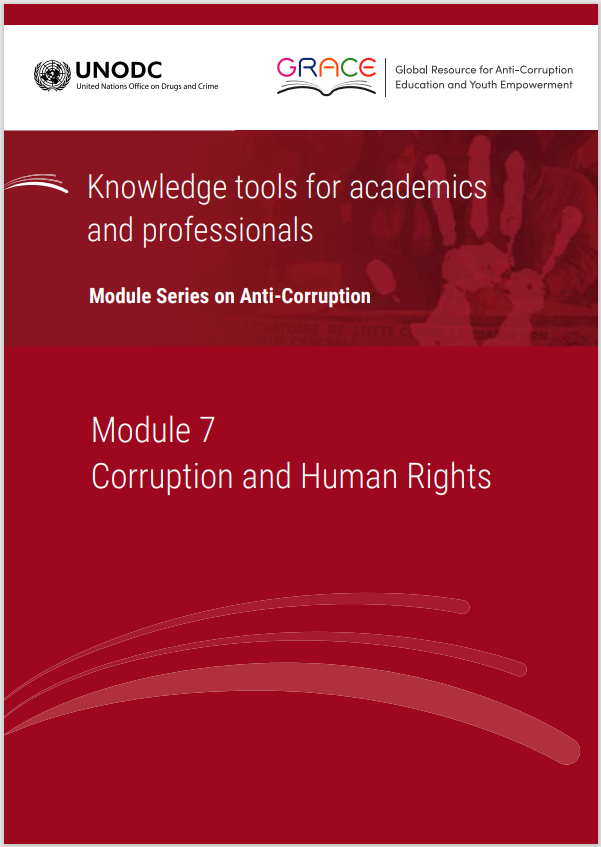This module is a resource for lecturers
Student assessment
This section provides a suggestion for a post-class assignment for the purpose of assessing student understanding of the Module. Suggestions for pre-class or in-class assignments are provided in the Exercises section.
Ask the students to write a research essay (max. 1,500 words) addressing a real-world example of a human rights violation caused by corruption. The essay should document the behaviour that the corrupt conduct entailed, describe the effects that the corrupt conduct has had or is likely to have, discuss which human rights were violated in the case, and analyse the anti-corruption efforts in place and whether they were considered through a human rights perspective. The students may choose a major scandal or a lesser-known case. The point is for them to apply what Module 7 teaches in terms of the nexus between corruption and human rights, and the different approaches to understanding it. This assessment may be accomplished by way of an in-class presentation, which would then replace some of the class activities suggested above. The assessment can also be combined with Exercise 4.
An alternative method of student assessment may include assigning students to record a TED Talk-style video in which they discuss issues presented by the lecturer during class:
- Why do we need to integrate human rights and anti-corruption efforts?
- Corruption as a free-standing human rights violation.
- Criticizing the human rights-based approach to corruption.
- Governments should prioritize either human rights or anti-corruption, not both. Which one should it be?
- In the case of both human rights and anti-corruption, the reality is that violations cannot be eradicated in some places, and we should just accept that.
 Next: Additional teaching tools
Next: Additional teaching tools
 Back to top
Back to top
